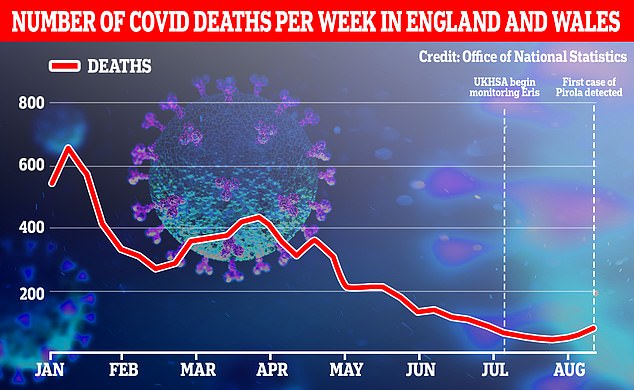The number of Covid cases has almost DOUBLE in a month, with estimates showing nearly 93,000 new infections every day
The number of Covid cases has almost DOUBLE in a month, with estimates showing nearly 93,000 new infections every day
- Data shows that the number of cases in September increased by 50,000 from the beginning of August
- The increase in the number of cases is accompanied by the emergence of a new Covid variant
It is estimated that Covid cases have almost doubled in a month to almost 93,000 new infections per day.
With schools returning today, cases are expected to continue rising into the fall.
Data from the ZOE Health Survey shows that there were 92,965 new daily cases of symptomatic infection on September 1 – up from about 50,000 at the beginning of August.
The research, which is based on data from millions of users of the ZOE app, estimates that there are currently around 1.15 million people in Britain infected with the virus – about one in 58.
The rise in cases is accompanied by the emergence of a new Covid BA.2.86 variant known as Pirola. As an Omicron spin-off, only four cases have officially been detected in Britain, although far fewer tests are now being carried out.
The rise in cases is accompanied by the emergence of a new Covid BA.2.86 variant known as Pirola

Data from the Office of National Statistics released today shows 74 Covid deaths were recorded in the two countries in the week ending August 11
Although it is not yet considered a ‘variety of concern’, health chiefs have warned it could be ‘a very challenging winter’ if it is found to increase the risk of infection.
Last week, officials put forward the annual flu and Covid vaccination program to ensure vulnerable people are protected this winter.
Those who qualify can book a jab for a week starting today instead of early October as originally planned.
Residents of care homes for adults and the clinically vulnerable will be first in line, followed by groups including the over-65s and healthcare workers.
